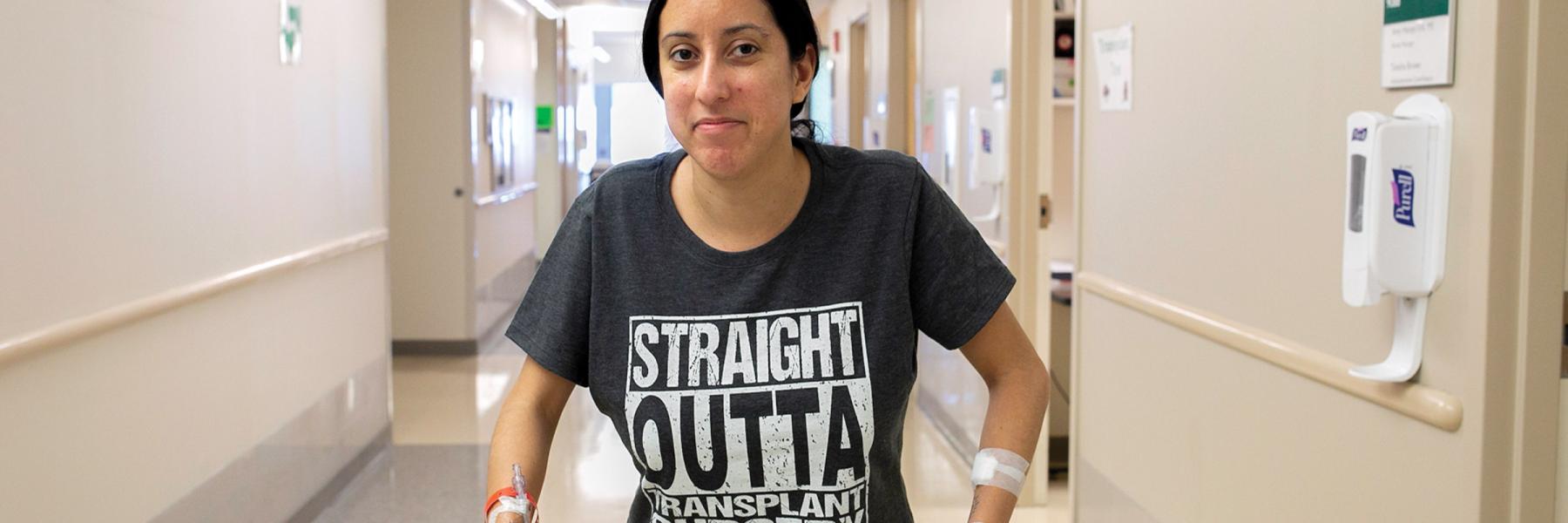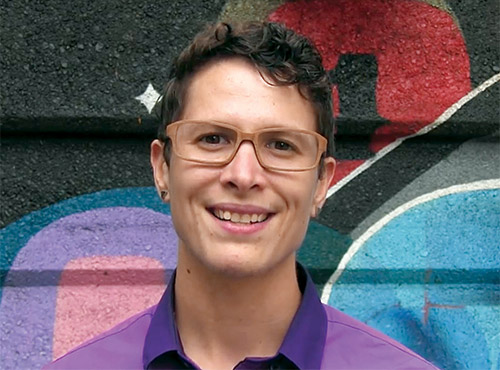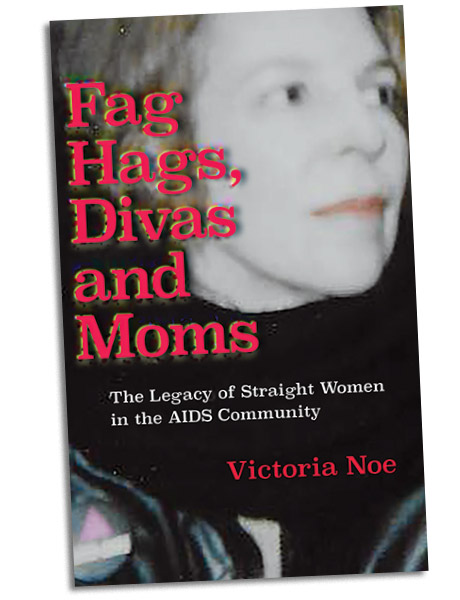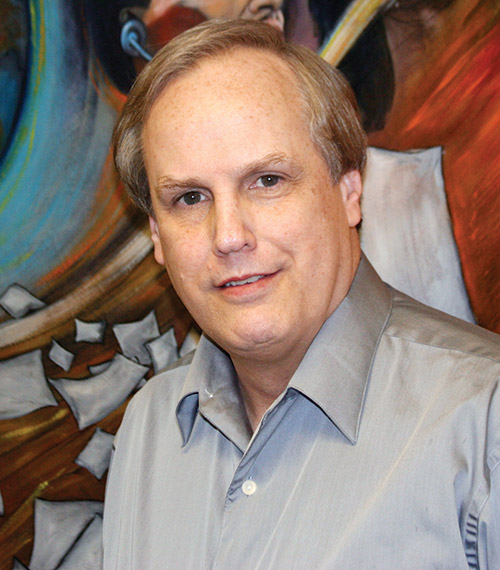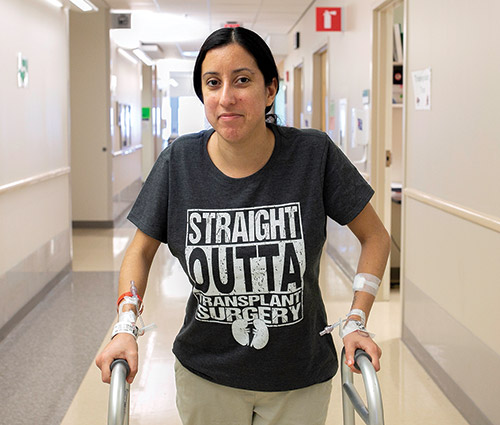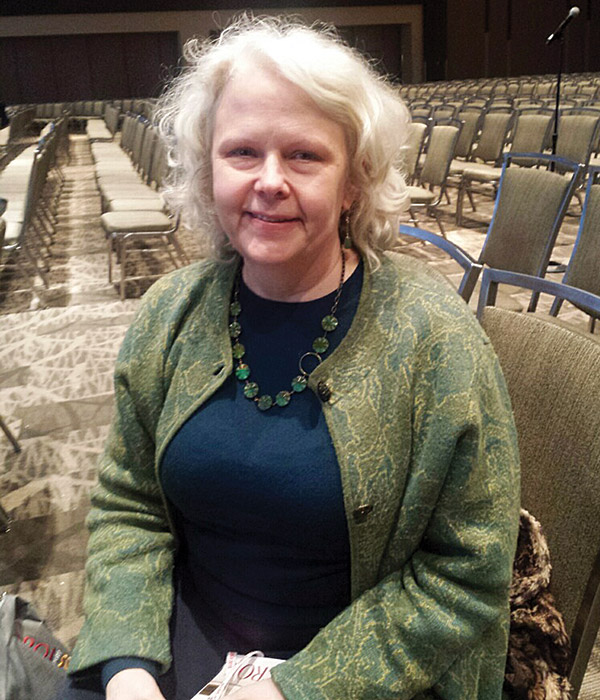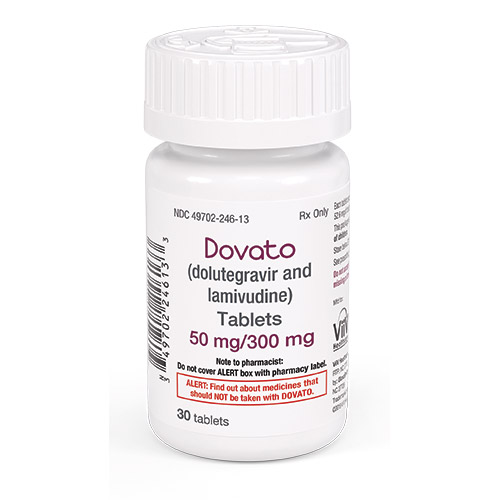
The FDA on April 8 approved Dovato, a two-drugs-in-one complete HIV medication regimen. Dual drugs are causing excitement for cutting down the potential for side effects. HIV therapy has been dominated by triple therapy, even if taken as only one pill
Two years ago, Juluca became the first dual drug single-tablet regimen (STR) on the market. Like Juluca, Dovato contains dolutegravir, an integrase strand transfer inhibitor (INSTI). Unlike Juluca, Dovato is recommended for people taking therapy for the first time. The INSTI medications (except Juluca) are all approved by U.S. HIV treatment guidelines for most people taking antiviral therapy for the first time. The dolutegravir in Dovato is combined with 3TC (or lamivudine), an extremely tolerable HIV drug that’s been in use for more than 25 years. Side effects occurring in at least 2% of study participants receiving Dovato included headache, nausea, diarrhea, insomnia, fatigue, and dizziness. Psychiatric disorders have been found with INSTIs. Some individuals (less than 1% of all participants) discontinued study drug for this reason. At this point, a pregnancy test for individuals of childbearing potential is recommended before taking dolutegravir. This is due to a report of a very rare birth defect seen in infants born to mothers who took dolutegravir around the time of conception. More information from that study in Botswana is expected this year. See the Dovato page in POSITIVELY AWARE’s HIV Drug Guide at positivelyaware.com.
HIV drug fights inflammation
Brown University reported that generic lamivudine, an HIV medication with practically no side effects, reduced age-related inflammation in old mice. “This holds promise for treating age-associated disorders including Alzheimer’s,” said John Sedivy, professor of medical science and biology at Brown University, in a press release. “And not just Alzheimer’s but many other diseases: Type 2 diabetes, Parkinson’s, macular degeneration, arthritis, all of these different things. That’s our goal.” Age-related inflammation is an important component of age-associated disorders, according to the release. Inflammation, basically a process by which the body breaks down, has long been associated with HIV. Treatment is one way to control that inflammation. The study was published in the February 7 issue of Nature.
AIDS United: Protect Medicare Part D
In light of the White House’s call to end the HIV epidemic in the United States by 2030, AIDS United responded by urging the federal government to withdraw its proposed Medicare Part D rule.
The proposal would restrict access to HIV medicines, AIDS United reported.
“The six protected classes of Medicare Part D were created to ensure people with serious medical conditions whose health would be severely impacted by any treatment interruption, like HIV and epilepsy, could access the best medicines as prescribed by their doctor,” AIDS United said in a press release. “These protections have helped millions and contributed to the significant reductions in new HIV diagnoses across the country. Without the protections afforded to these drugs, insurance companies could potentially interfere in treatment decisions and restrict access to life-saving medications for the more than 250,000 people living with HIV who are currently enrolled in Medicare.”
The national advocacy organization created a series of ads urging the government to rescind its proposal. Go to aidsunited.org.
Latino Commission on AIDS: Stigma and transphobia
For the Seventh Annual Latino Health Action Day, held February 26 in New York City, the Latino Commission on AIDS conducted two panel discussions on the effects of stigma, homophobia, transphobia, and xenophobia (fear or hatred of people from other countries).
“After listening to both panels, it’s understood that we have much work to do on addressing stigma in our communities,” said Guillermo Chacón, president of the commission and founder of the Hispanic Health Network, in a press release. “We need to facilitate conversations around many forms of stigma that include HIV status or perceived HIV status, homophobia, transphobia, race/ethnicity, and xenophobia that impact health care access in our communities.”
La Comisión Latina sobre el SIDA: El estigma y el transfobia
Para el Séptimo Día Annual Latino de Acción por la Salud, el 26 de febrero en Nueva York, la Comisión Latina sobre el SIDA presentó dos paneles sobre los efectos del estigma, transfobía, y xenofobia (el miedo o odio a las personas de otros países).
“Después de escuchar ambos paneles, se entiende que tenemos mucho trabajo que hacer para abordar el estigma en nuestras comunidades,” declaró Guillermo Chacón, presidente de la Comisión y fundador de la Red de Salud Hispana, en un comunicado del prensa. “Necesitamos conversaciones facilitadas sobre las muchas formas de estigma que incluyen el estado de VIH o estado de VIH percibido, homofobia, transfobia, raza/etnia, y xenofobia que afectan el acceso a la atención médica en nuestras comunidades.”
LGBT elders at inaugural advocacy lobbying day
SAGE, the country’s largest and oldest organization dedicated to LGBT elders, held its first-ever National Day of Advocacy on Capitol Hill, on March 13.
More than 120 SAGE constituents and staff nationwide, from 20 states and Puerto Rico, met with dozens of members of Congress and their staffs, telling their stories and advocating for rights for LGBT elders.
“On top of a tremendously successful National Day of Advocacy, when we joined forces with hundreds of our LGBT pioneers, we also celebrated the introduction of game-changing legislation that will have a major impact on LGBT elders and those living with HIV for years to come,” said SAGE CEO Michael Adams, in a press release. “Through the National Day of Advocacy and SAGE’s ‘Still Out in Front: 50 Years of Pride’ campaign, we will continue to fight to better protect our community’s trailblazers.”
The proposed legislation, known as the Ruthie and Connie LGBT Elder Americans Act, “would ensure that LGBT elders and older people living with HIV have improved access to aging services and supports the Older Americans Act, the country’s largest vehicle for funding and delivering services to older people in the U.S.” It was re-introduced on March 14 by U.S. Representative Suzanne Bonamici and her colleagues Ted Deutch and Charlie Crist.
Ruthie Berman, namesake of the bill, told the audience, “I am beyond proud tonight to be here in this room with SAGE, and leaders in my government. I didn’t come out until I was 40, when I fell in love with Connie. I wish you all the relationship that I had with my beloved Connie. It is extraordinary to come to this point and know that there’s still work to be done. SAGE, you are holding up this country, with the work that you do.”
SAGE has launched an online advocacy campaign, generating letters to members of Congress. The organization encourages people to participate by sending letters to their representatives at sageusa.org/still-out.
Transgender filmmaker debuts new documentary
For International Transgender Day of Visibility, March 31, the global streaming network Revry premiered the documentary series America in Transition. Transgender filmmaker, educator, and community organizer André Pérez founded the Trans Oral History Project in 2008, motivated by his own sense of isolation growing up in a military family in Virginia. The series includes a veteran turned activist, an immigrant seeking a home, a woman living with HIV healing from trauma, and a model navigating family life. “I had questions about everything from health care access to navigating relationships, but I had no one to ask,” said Pérez about growing up. “Without role models or institutional support, I felt like I had to come to the city to find myself.” Go to Revry.tv for more, including community partnerships around the country.
New book celebrates women in the AIDS crisis
HIV activist and writer Victoria Noe has a new book, looking at women who made a difference in the AIDS epidemic. According to a press release, Fag Hags, Divas and Moms: The Legacy of Straight Women in the AIDS Community, “shines a light on the courage, defiance, and compassion displayed by heterosexual women who came forth when the AIDS epidemic of the 1980s and ’90s was decimating both the gay community and communities of color across America.” The book covers both famous and not-so-famous women. Noe, a longtime author and veteran member of Chicago’s HIV community, said she found that most books on the epidemic were written by white men. She wanted to write something specifically about women’s role in the epidemic as they dealt with ignorance and ridicule.
Project Inform closes
Project Inform co-founder, the late Martin Delaney
“We wish to honor and celebrate nearly 35 years of service to people living with and at risk for HIV and a decade-plus service to people at risk for or living with hepatitis C,” the staff said in a statement. “Despite the continued success and evolution of our work in HIV and HCV—two of the most stigmatizing diseases in the United States—we have not been able to successfully navigate the current funding environment. We’ve been proud to work with colleagues who are among the most creative, strategic, committed, and passionate advocates, providers, educators, and decision-makers in the country. We’re also deeply grateful to the funders and donors who have so generously supported Project Inform through the years.”
Among its efforts, the San Francisco-based agency produced the annual Hepatitis Drug Guide published each year in the July + August issue of POSITIVELY AWARE, and went above and beyond in helping to produce this essential comprehensive resource. Project Inform and its Hepatitis C Education Manager, Andrew Reynolds, simply approached the magazine to collaborate on a similar version of POSITIVELY AWARE’s annual HIV Drug Guide.
“When Martin Delaney and Joe Brewer founded Project Inform in 1984, they couldn’t have imagined the great changes that would grow out of their urgent desire for people with HIV to be able to take charge of their own health and work toward better health for their peers,” the statement continued.
“Thirty-five years hence, life with HIV is counted in decades rather than weeks or months and HIV can’t be transmitted when viral suppression is achieved. As well, people wishing to protect themselves from HIV transmission have an additional powerful tool, pre-exposure prophylaxis (PrEP). Hepatitis C is curable and people who use drugs may soon have greater access to services that will keep them alive.
“Above all, the millions of pieces of print and electronic publications we’ve offered people freely, the videos we’ve disseminated, and the thousands of hours spent counseling individuals on the phone or by chat have helped ensure that people know about these facts and can use them to positively impact their own lives and the lives of the people they love or provide care for,” the staff said.
The dedicated and brilliant staff members, including David Evans and Anne Donnelly, will continue to work on behalf of people living with HIV and hepatitis C in new endeavors.
Judge says airmen who are living with HIV can remain in service—for now
Efforts by the U.S. Air Force to discharge two active duty airmen because of their HIV status have been halted for now. U.S. District Judge Leonie Brinkema issued a preliminary injunction, saying that the Air Force’s treatment of personnel who are HIV-positive was “irrational, inconsistent, and at variance with modern science.”
The airmen’s case, Roe and Voe v. Shanahan, was taken up by Lambda Legal and OutServe-SLDN. Although it applies only to 22 airmen who are HIV-positive, and not to personnel in other branches of the military, Scott Schoettes, Lambda Legal’s HIV project director, says that the case could eventually have larger implications for HIV discrimination in the workplace.
For combat reasons, the military is exempted from the Americans with Disabilities Act. However, says Schoettes, one of the arguments in this case is that the Pentagon can’t arbitrarily discriminate against one group of people or another.
“The U.S. military is the largest employer in the world,” says Schoettes. “When you’re suing that entity, you have the potential to make change on a large scope. The next frontier is employment discrimination—it’s already been determined there’s no risk in food preparation, working for Cirque du Soleil, or as a first responder living with HIV. If you can do the job of soldier, you can do any job without any risk to others.”
The judge’s ruling was issued in February; while no trial date has yet been set, the case is expected to go to court late this summer or early fall. —RICK GUASCO
Transplanting hope: “I don’t want to be anyone’s hero. I want to be someone’s example, someone’s reason to consider donating,” says Nina Martinez.
First kidney transplant from a donor living with HIV
Nina Martinez became the world’s first HIV-positive to HIV-positive living kidney donor, following a successful transplant of one of her kidneys to a recipient. According to a press release, a multidisciplinary team from Johns Hopkins Medicine completed the living donor HIV-to-HIV kidney transplant on March 25. The doctors say both the donor and the recipient are doing well. During a press conference following the surgery, Nina, who wrote about her journey to becoming a living donor in POSITIVELY AWARE’s January + February issue (“Where There’s HOPE”), said that one of the unexpected things that came out of the whole experience was that they discovered she had a kidney stone, although it was not enough of an issue to cause concern for the transplantation.
“Some people believe that people living with HIV are ‘sick,’ or look unwell,” says Martinez. “For me, I knew I was in good health. HIV was no longer a legal barrier to organ donation, and I never considered HIV to be a medical barrier either. As a policy advocate, I want people to change what they believe they know about HIV. I don’t want to be anyone’s hero. I want to be someone’s example, someone’s reason to consider donating.”
People living with HIV haven’t been able to donate kidneys until now, because there were worries that HIV was too much of a risk factor for kidney disease in the donor. However, Dorry Segev, MD, PhD, professor of surgery at the Johns Hopkins University School of Medicine, and colleagues’ recent research on over 40,000 people living with HIV showed that the new antiretroviral drugs are safe for the kidney, and that those with well-controlled HIV have basically the same risks as those without HIV and are healthy enough to donate kidneys.
“This is the first time someone living with HIV has been allowed to donate a kidney, ever, in the world, and that’s huge,” says Segev. “A disease that was a death sentence in the 1980s has become one so well-controlled that those living with HIV can now save lives with kidney donation—that’s incredible.” —JEFF BERRY
Several local and national dignitaries and celebrities joined in cutting the ribbon in front of the Anita May Rosenstein Campus (from left to right): Congressman Adam Schiff; Los Angeles Mayor Eric Garcetti; Los Angeles LGBT Center CEO Lorri L. Jean; lead donor Anita May Rosenstein; David Bailey, capital campaign Chair and co-chair of the Center’s board of directors; Los Angeles County Supervisor Sheila Kuehl; philanthropist Ariadne Getty; Los Angeles councilmember David Ryu; and entertainers Lily Tomlin and Kathy Griffin.
Los Angeles LGBT Center opens intergenerational facility.
Conceived more than a decade ago, the Los Angeles LGBT Center opened its two-acre Anita May Rosenstein Campus in April. The $141 million, 180,000-square-foot facility will offer housing and social services for youth and seniors in an intergenerational setting.
The new building houses 100 beds for homeless youth, a youth drop-in center, the Ariadne Getty Youth Academy, and a senior community center, and will also serve as the Center’s administrative headquarters. The Center is compromised of buildings at several locations in Los Angeles and Hollywood; the current headquarters, at the four-story McDonald/Wright Building, will be transformed entirely into a health center. Plans for the new campus call for 99 units of affordable senior housing and 25 supportive housing apartments for youth to open by mid-2020.
“Let’s be clear: this is not my campus, it’s our campus,” said lead donor Anita May Rosenstein. “Our campus is a beacon of hope and inspiration for people around the world. It is a safe haven for youth experiencing homelessness, and it will become a unique experience for youth and seniors to live together and learn from each other.”
The opening of the new campus was celebrated with a day-long block party, and comes as the Los Angeles LGBT Center marks its 50th anniversary. With nearly 700 employees, it is the largest LGBT social services organization in the world. For more information, go to lalgbtcenter.org. —RICK GUASCO
In the Clinic
All my transgender youth living with HIV acquired it at less than 15 years old by a man 20 years and older. Even the cisgender girls acquired HIV from an older man. My newest patient is a 14-year-old male. His initial description of his situation is that he was in love. But the man was 35 years old. That’s not a choice. That man is a pedophile.
—Laura Hoyt, MD, of Children’s Hospitals and Clinics of Minnesota, is an Assistant Professor of Pediatrics at the University of Minnesota Medical School. She spoke to the speakers at the CROI 2019 symposium “Girls and Boys Just Want to Have Fun: Making Prevention Desirable for Youth.” See the symposium at croiconference.org.
Share your clinical and medical insights with POSITIVELY AWARE for our In the Clinic feature. Send to e.vazquez@tpan.com.


